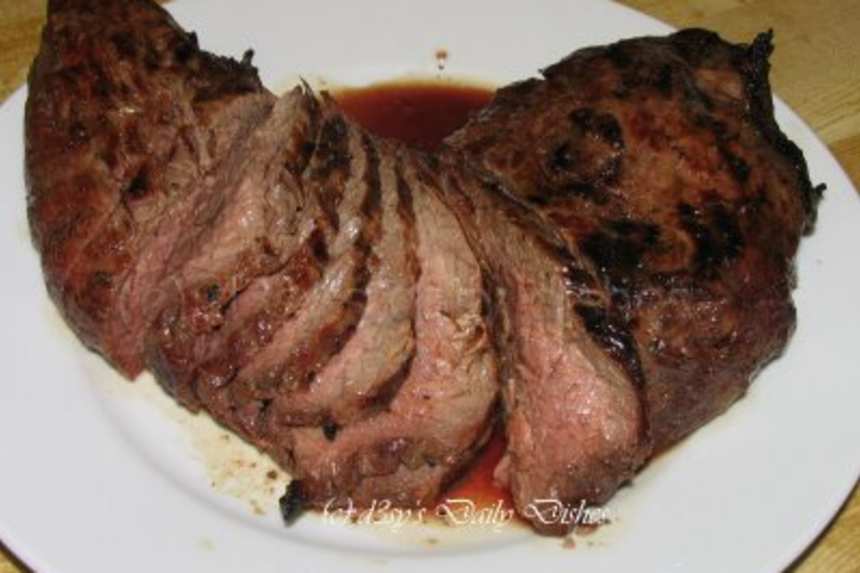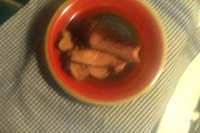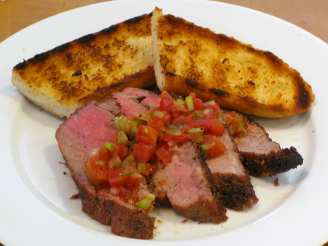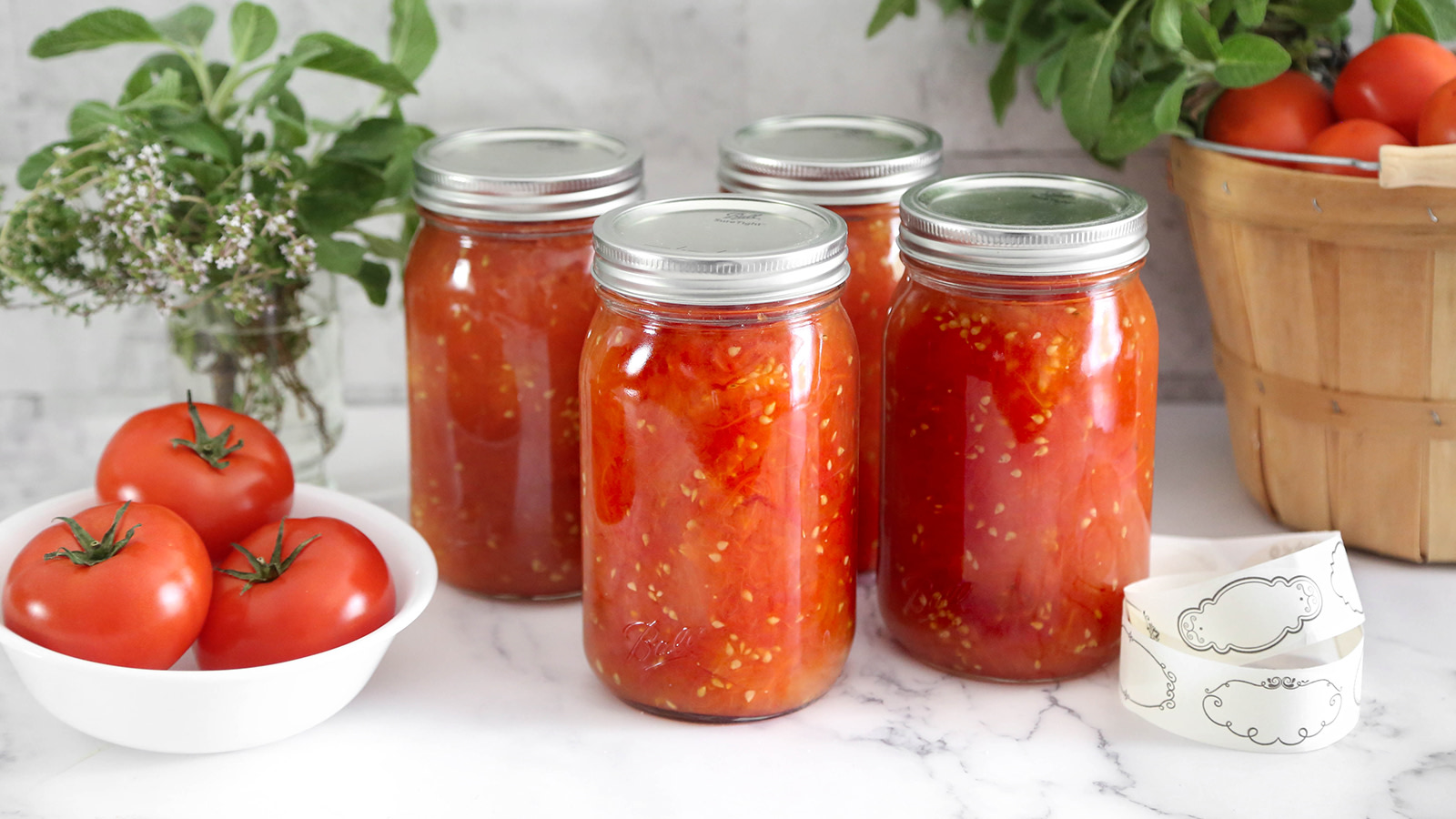Old School Santa Maria Tri-Tip

photo by Kana K.


- Ready In:
- 27mins
- Ingredients:
- 4
- Serves:
-
4
ingredients
- 1 -2 lb tri-tip steak, forget Select Grade (it'll be too tough. Leave the fat on.)
- salt
- garlic powder
- black pepper
directions
- Cover the tri-tip with a THICK layer (a "rub") of garlic/salt/pepper. You can use "garlic salt" but purists prefer to use garlic powder and then salt, separately. (If you wish, leave it covered and refrigerate overnight.) If you don't have the time, no problem! give it a thick covering and throw it on the grill.
- One hour before starting to grill, take the tri-tip out of the refrigerator and let it sit, so that the temperature rises about to room temperature. (the internal temperature difference between the refrigerated and room temperature tri-tip is at least 30F -- between 40F and 70°F The difference between a rare tri-tip and well-done tri-tip is only 20F -- 140F for rare, and 160F for well-done.)
- The outside of the tri-tip will sear and attain the perfect flavor and texture in about 7 minutes per side (there are 5 sides on a tri-tip, so the total cooking time should be around 25 minutes (note that this will vary because of differences in the quality of the meat, the outside temperature, humidity and wind etc etc.] Back to the reason to let the meat's internal temperature rise to room temperature: In 7 minutes per side of cooking, the internal temperature -- about 3 inches into the meat -- will climb about 70°F If the internal temperature begins at 70F, then in 7 minutes it will be a perfect 140F for rare-meat lovers. But if the meat starts at only 40F internally, then its internal temperature will be only 110F after 7 minutes, so it won't be done. So the meat will have to stay longer on the fire -- perhaps another 3 minutes per side, or 15 minutes total -- in order for its internal temperature to reach 140°F But by then the outside 1" of the meat will be over-cooked and dry. That's the reason to let the meat come up to room temperature: in effect, you are pre-cooking the inside.
- When ready to grill, make sure that the coals from burned down wood -- red oak is the traditional choice in Santa Maria, because that's what's there -- or charcoal (lump is best) is VERY VERY hot and that the flames have died down. The charcoal should be covered with a light gray ash. To get a very hot grill, you'll need to use lots of charcoal -- for one good sized tri-tip, use about 5 pounds of lump. Here in environmentally aware California, to start our charcoal fire, we use a "chimney" rather than charcoal lighter fluid, and the chimney that I use holds about 5 pounds of lump. I use a Weber Kettle and put the lump in the charcoal holders so that the charcoal is about 4" deep. After the fire is perfect, put on the grill and let it get very hot. Just before putting on the meat, brush the grill with some olive oil.
- Start with the fat side up (in truth it makes no difference."If you put the fat side of the tri tip on the fire first, the moisture will come up through the meat and make it tender.") The problem I have with this is that, as the fat warms, it will drip down into the fire and will not evaporate until it's in the fire. But it doesn't make any real difference, because you have to turn the tri-tip after 1 or 2 minutes per side so that you sear it on all sides. Note that, in order to sear the thin edges, you have to figure out a way to balance the tri-tip on one end.
- If you're cooking several at once, it's easy to lean them against one another, but if you're cooking only one, you'll have to use a long wooden spatula or some other jerry-rigged device to balance the tri-tip on its thin edges.
- The BIG SECRET: when you first put the tri-tip on the grill, the fire might start flaming. This is GOOD to a point: the fire will totally blacken the meat (which is what you want). Let the flames blacken one side of the tri-tip for 30 or 45 seconds, and then rotate the tri-tip to do a different side. (There are a total of six sides.) But don't overdo the flames: the idea is to sear the juices in and to create a wonderfully delicious crust, but not to dry out the meat. After the flames have seared the meat so that it's black all around, then move the meat to the side or back of the grill, where it is still VERY HOT but not directly above the fire so that it will NOT FLAME.
- The total cooking time varies, and there is no absolute. Tri-tip is best when seared (blackened) on the outside, which is crunchy with the garlic and salt, and when it's red rare in the center. Cooking time depends on how big the tri-tip is, how rare you like it, the heat of the fire and the distance from the coals to the meat. For a 3 pound tri-tip, I'd plan for a total of about 30 minutes, with constant attention, but keep in mind that I like it very rare. Be careful with timing, though.
- When you think that the meat is done, remove it from the fire and cut it in half (to check that it's done). Remember that, even after you take the meat off the grill, it is continuing to cook. So, when you cut into the meat to check that it's done, it should be even rarer than you want. If it's done, leave it for 7 minutes (not 5, not 10) -- so that the juices settle into the meat (otherwise, when you slice it, you'll have a plate full of juice that should have stayed in the meat). If it's not done, put each half back on the grill for a few minutes -- but be sure not to overcook it.
- After the tri-tip has rested exactly 7 minutes, trim the fat and then slice it VERY thin -- not quite "paper thin" but as thin as you reasonably can with a sharp knife. Cut across the grain, which is across the triangle. An illustration: if you can imaging that the tri-tip is in the shape of a pyramid, then cut it starting at the top of the pyramid and slice horizontally. Thus, the slices will not all be the same size, but the meat will be the most tender.
Questions & Replies
Got a question?
Share it with the community!
Reviews
Have any thoughts about this recipe?
Share it with the community!
RECIPE SUBMITTED BY
Kana K.
Cool, California
100% food experimenting amateur chef... I use this site to keep my online cook book and recipes I want to try.




